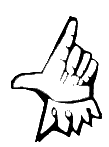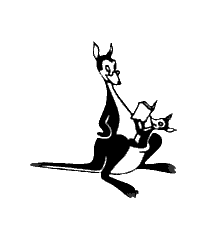Pocket Books
Inc., New York
Pocket Books were the first
American paperbacks to be distributed on a large scale. The firm was founded
in 1939 by Robert F. DeGraff, M. Lincoln Schuster, Leon Shimkin and Richard
L. Simon, after the marketing of 2,000 copies of a test edition of Pearl
Buck's The Good Earth in the autumn of 1938. The first 10 titles released
in 1939, were printed in editions of 10,000 copies each (except for number
6, Dorothy Parker's Enough Rope, of which only 7,600 copies were printed).
1. Lost Horizon-
James Hilton
2. Wake Up and
Live!- Dorothea Brande
3. Five Great
Tragedies- William Shakespeare
4. Topper-
Thorne Smith
5. The Murder
of Roger Ackroyd- Agatha Christie
Number 259, Ellery Queen's
Halfway
House (1944), was published in an oblong format and set in two columns,
just like the Armed Services Editions; this experiment was not repeated.
Numbers 268, 321 and 324
were published with dustjackets.
Production supervisor James
Jacobson originally functioned as art director and hired artists to produce
cover illustrations. When Jacobson was called up for military service,
his position was taken over by Ed Rofheart, who gave cover assignments
to design-oriented artists like E. McKnight Kauffer, Leo Manso, Jeanyce
Wong and George Salter. Sol Immerman,
who had been doing coverwork for Pocket Books on a freelance basis, was
appointed full-time artdirector in 1947; he remained in that position until
1975, the year the firm was bought by Gulf and Western.
Over the years, Immerman
worked with the following artists: H.L. Hoffman, Leo Manso, Stanley Meltzoff,
Harry barton, Roswell Keller, Paul Kresse, Frank McCarthy, Casey Jones,
Carl Bobertz, George Erickson, harry Bennett, Tom Dunn, John Groth, Victot
Kalin, James Meese, Gerald McConell, Don Neiser, Barye Phillips, Verne
Tossey, Lou Marchetti, Paul Bacon, Charles Binger, Richard Powers, Sam
Savitt, Robert Schulz, Charles Skaggs, Stanley Zuckerman, Bob Abbett and
Robert McGinnis.

Pocket Books (G.B.) Limited
was established in London in August 1949; the first titles were released
the following spring.
B1. Ming Yellow-
John P. Marquand
B2. Pro- Bruce
Hamilton
B3. The Lost Weekend-
Charles Jackson
B4. Mink Coat-
Kathleen Norris
B5. The Anatomy
of Murder- Dorothy L. Sayers and others
The British Pocket Books
resembled their American cousins in format and graphics, but their cover
illustrations, being of British origin, were of a lower quality. The series
was abandoned in 1953.
By 1951, the price of 25
cents per volume could no longer be maintained for all Pocket Books; as
a forum for higher-priced books, the Cardinal Editions entered publication
in that year, priced at 35 cents; in 1952, the 50- or 75-cent Cardinal
Giants were added.
The difference between the
Cardinals and the standard Pocket Books was indicated by a colored band
along the spine: Pocket Books had a silver band, while the more expensive
Cardinals had gold bands. In January 1951, Pocket Books' series for young
readers, which had appeared under the imprint Comet Books since 1948, was
renamed Pocket Books, Jr.
J-35 Ski Patrol-
Montgomery Atwater
J-36 Long Lash-
Bertrand Shurtleff
J-37 The adventures
of Tom Sawyer- Mark Twain
J-38 Baldy of
Nome- Esther Birdsall Darling
J-39 Sponger's
Jinx- Bert Sackett
After 43 titles (numbered
J-35 through J-77), the Junior line was discontinued as a result of disappointing
sales.

The first titles of the Pocket
Books Art Series appeared in 1953.
A1. Degas-
Daniel catton Rich
A2. El Greco-
John Matthews
A3. Toulouse-Lautrec-
Samuel Hunter
A4. Cezanne-
Theodore Rousseau, Jr.
A5. Dufy-
Alfred Werner
And in May, 1954, the Pocket
Library series was introduced. These books, which cost 35 or 50 cents,
bore unvarnished offset-printed covers and were advertised as being "books
of classic literary stature &quaot;.
PL-1. Man and
the State: The Political Philosophers- Robert N. Linscott
PL-2. Man and
Man: The Social Philosophers- Robert N. Linscott
PL-3. Man and
the Universe: The Philosophers of Science- Robert N. Linscott
PL-4. Man and
Spirit: The Speculative Philosophers- Robert N. Linscott
PL-5. The Imitation
of Christ- Thomas à Kempis

 Books
Books
 Books
Books